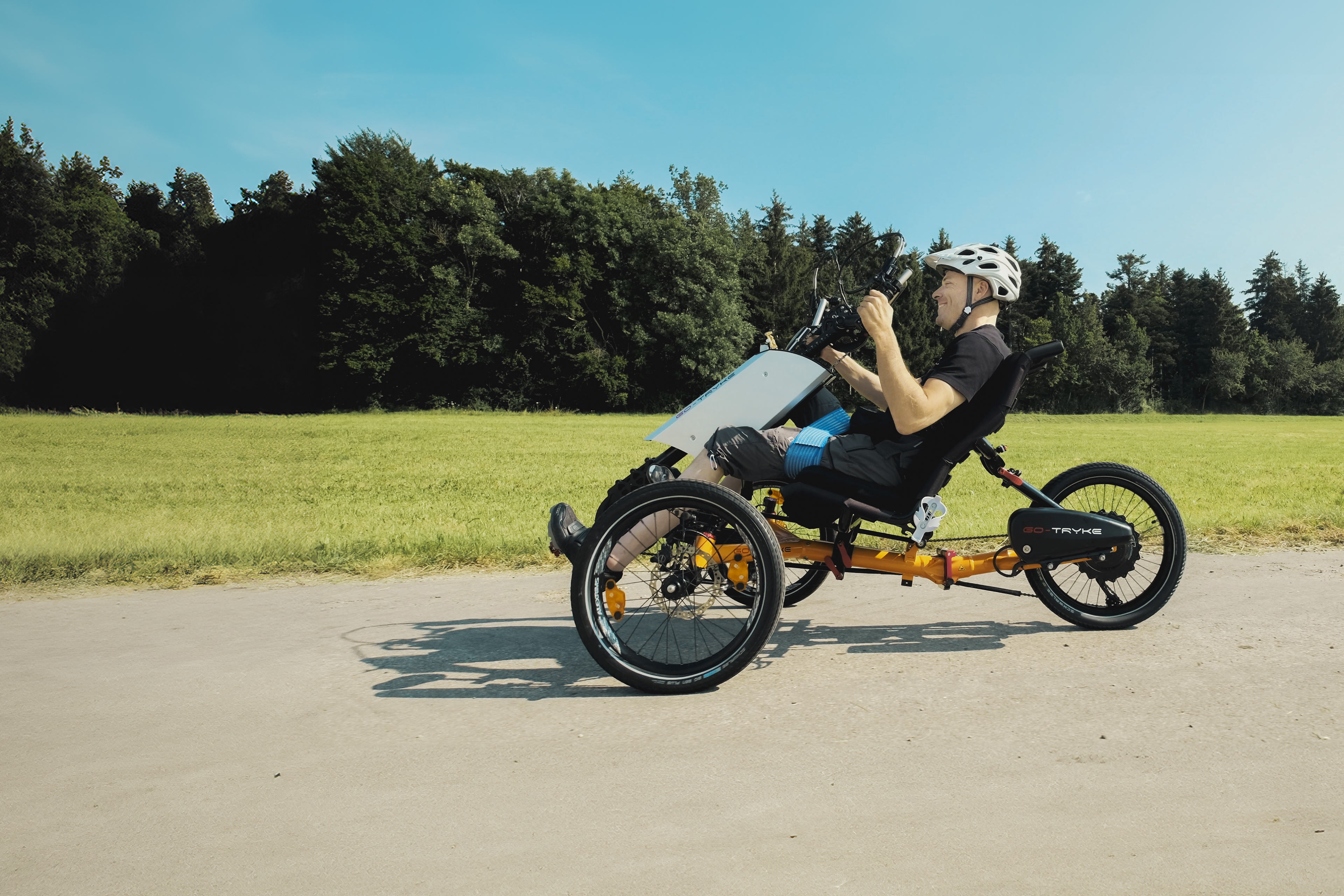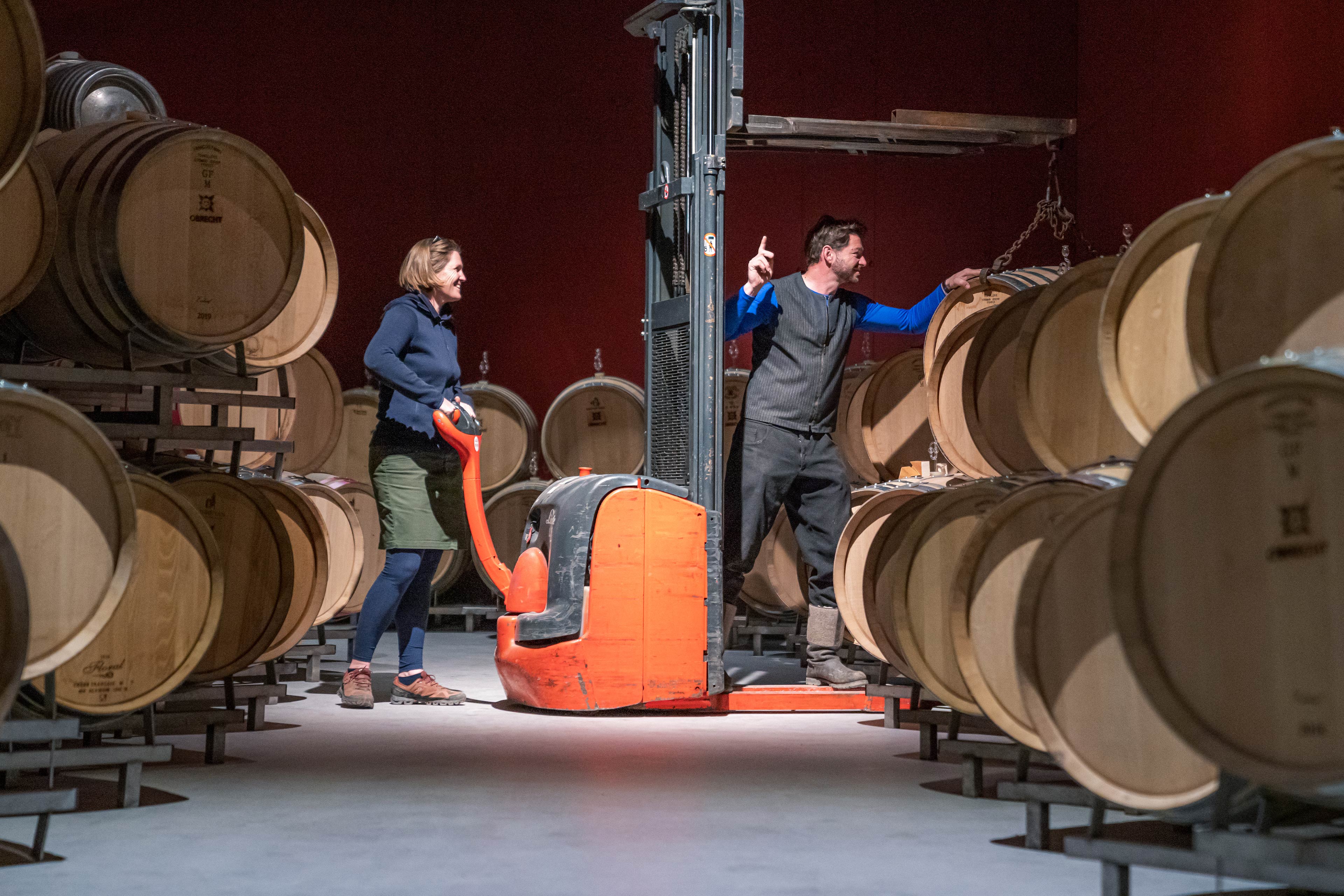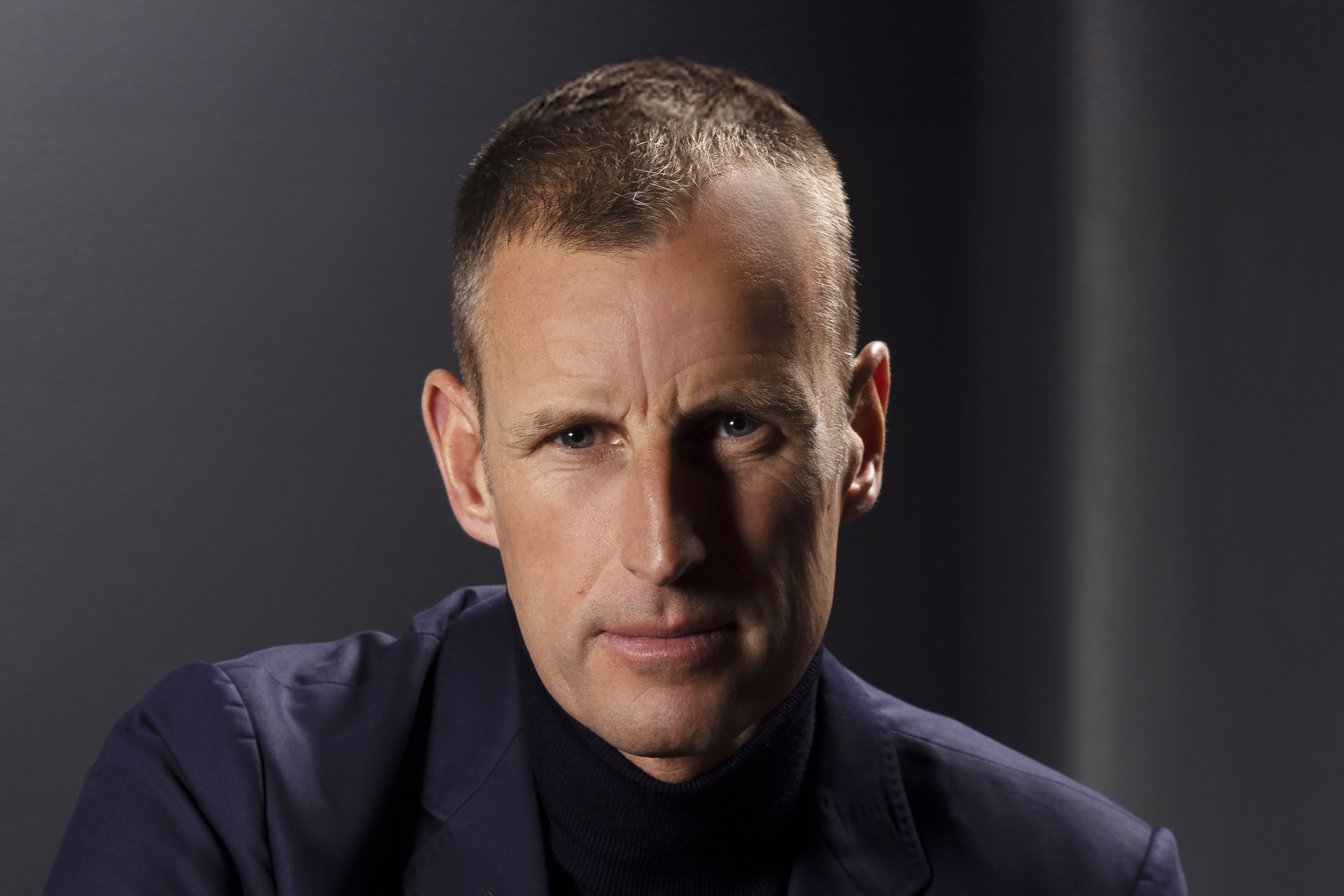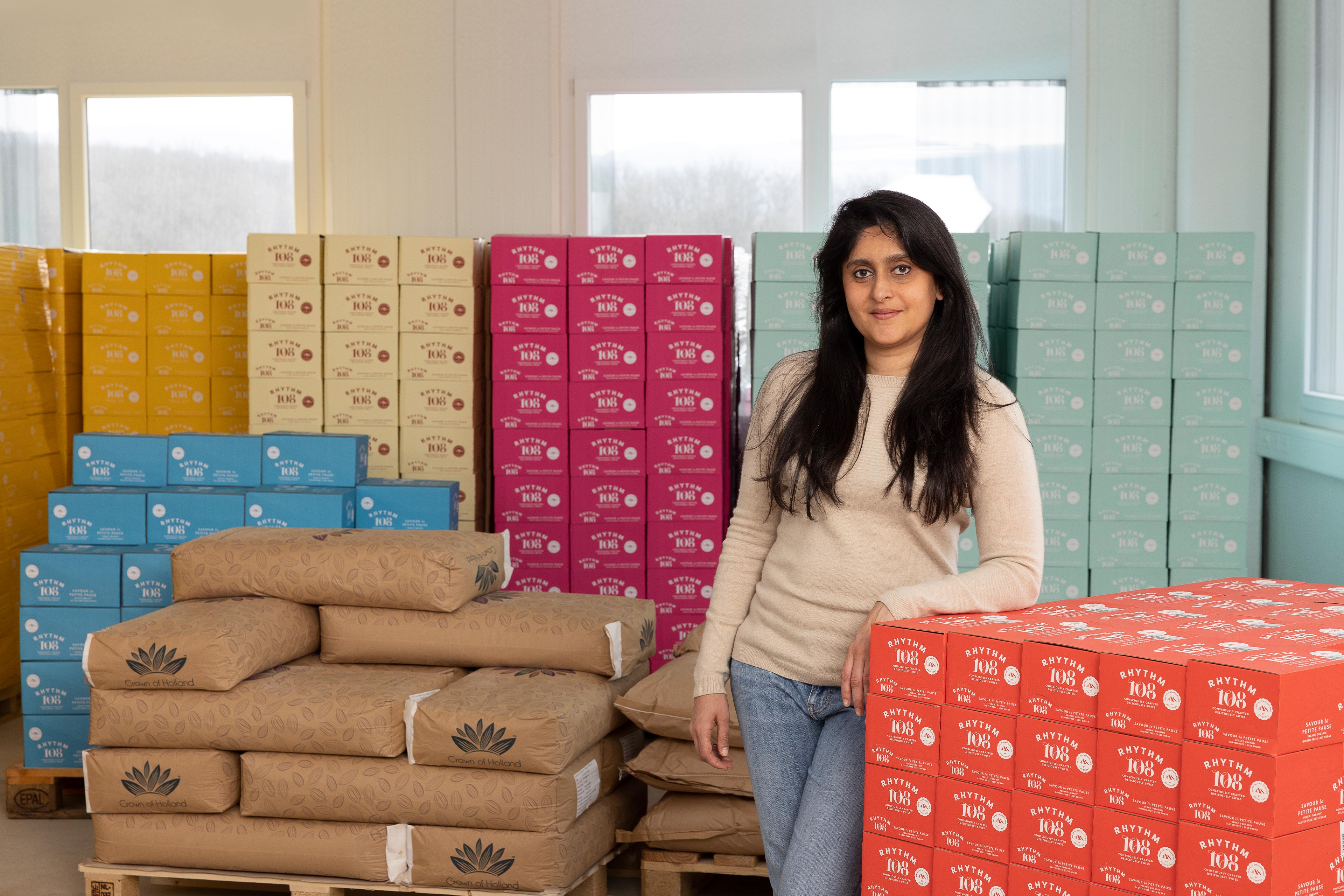EY refers to the global organization, and may refer to one or more, of the member firms of Ernst & Young Limited, each of which is a separate legal entity. Ernst & Young Limited is a Swiss company with registered seats in Switzerland providing services to clients in Switzerland.

“Committing to the Science Based Targets initiative is not an easy path, but it’s the right one.
Peter Rupp
Peter Rupp grew up in Sargans, Switzerland, around 20km south of the Hilti headquarters in Liechtenstein. He studied Economics in St. Gallen, then took a post-graduate degree in Engineering in Winterthur. Peter Rupp launched his career at ABB, working across three continents for 18 years in finance, supply management and sales and marketing. He joined Hilti in 2010 and headed the installation systems and construction services business units before taking on his current role as Head of Corporate Sustainability for Hilti Group in 2020.
Peter Rupp, Head of Corporate Sustainability at Hilti Group, explains his company’s commitment to the Science Based Targets initiative (SBTi), discusses the challenges the construction industry faces and shares his views on opportunities for circularity.
What does the “daily business” of sustainability look like at Hilti, and what’s your vision for the future?
Sustainability isn’t a standalone topic somewhere up in the ivory tower at Hilti HQ – it’s a gradual process of transformation across our organization. Our core goal is to truly integrate sustainability into our business processes and decisions. So, on a day-to-day basis, that means a lot of networking and building connections with different functions within Hilti Group and across hierarchies.
Sustainability is strongly linked to our purpose. We just launched our new group strategy Lead 2030, which articulates our purpose of “making construction better”. That, in turn, is related to three customer promises we seek to fulfil every day: to be the best partner in productivity, safety and sustainability. So that, in essence, is our vision, but it’s also our mission around sustainability.
What are the challenges and difficulties in your sector?
We operate in the construction market, which is a great industry but also one that’s associated with certain difficulties. On the one hand, the industry can take pride in serving a real need by providing a roof over people’s heads. On the other, there are challenges though. For example, we’ve hardly seen any productivity gains in the past century, and there are still too many accidents. It’s also a resource-intensive industry: construction uses large volumes of materials and energy, which also cause carbon emissions.
Why is sustainability so relevant for Hilti as a supplier of this industry?
Hilti was founded in the 1940s and we’ve always been a good corporate citizen – to people and the planet. But we recognize that there are challenges that go well beyond the construction industry. Climate change is a threat to all of us. We’ve also seen signals from our employees on this topic. For example, they told us in our annual global people survey that they want to do more for the environment, but also for people and society. That motivated us to raise our ambition and accelerate our efforts. During an intense strategy process in 2019 and early 2020, we came to the conclusion that we have to do more than we have been doing so far.
Our employees told us they want to do more for the environment, but also for people and society.
Reducing carbon emissions was the number one goal that emerged, and we set ourselves the target of becoming carbon neutral in the current year, 2023, as a first step. To get there, we’re following the principles of reduce, replace and offset. If you want to be credible on becoming carbon neutral, you have to reduce your consumption. Anything you can’t reduce should be replaced by a more sustainable alternative. At Hilti, we’ve switched to green electricity at the highest energy standards around the world. We’re also in the process of converting our global fleet of around 16,000 Hilti vehicles to alternative drive systems. These are the two big measures to replace fossil fuel sources. Given our ambitious timeline – from 2019 to 2023 – there’s still a portion of around 40% that we can’t reduce or replace entirely this quickly. So, we worked with the Hilti Foundation and our Climate Partners to develop projects that will enable us to offset that remainder and become carbon-neutral in 2023.
You mentioned the need to reduce consumption. What role do you think the circular economy plays here?
Circularity goes hand in hand with the CO2 topic and it’s very important. Less than 10% of the materials we consume every day are reused in a circular system. If you really want to make a difference, you have to consider circularity at the design phase. How reusable, recyclable, repairable is a tool? Where can we use recycled materials to produce it? When developing new products, these questions are critical.
Our leasing model also reflects circular principles. Embracing the product-as-a-service concept is the right thing to do from a sustainability point of view but also from a business perspective. We’re offering tool park optimization as a service and are adding options to lease extra tools on demand. At the end of a tool’s lifetime, we collect it and reuse parts where possible or recycle the raw materials where not.
Embracing the product-as-a-service concept is the right thing to do from a sustainability point of view but also from a business perspective.
What’s next on Hilti’s sustainability agenda, and how will you measure and report on your progress?
Focusing on our own operations is just the first step. Scope 3 emissions in our supply chain, from transportation and the use of our products, amount to around 20 times what we produce ourselves. We performed a very detailed analysis and then opted to follow the Science Based Targets initiative, SBTi, as we feel it’s the most credible way to set trustworthy and transparent CO2 targets. Another reason is that it addresses Scope 3, not just an organization’s own initiatives. We believe that working together with suppliers and other stakeholders is crucial to make an impact. Although the targets are tough, the guidance is very clear. We like that transparency around progress. But we also admit that we currently only have clarity on around 50% of the targets we want to set ourselves. Committing to SBTi is not an easy path, but it’s the right one.
Has the energy crisis affected your sustainability agenda at all?
It has accelerated our efforts to save energy. There’s always potential to reduce consumption through small steps like switching off lights and laptops, for example. At our headquarters in Liechtenstein, we’ve installed two large photovoltaic systems and, globally, we have doubled our solar power capacity over the past 12 months. It means we can produce a portion of the electricity we need ourselves, which helps relieve the energy crisis but also makes good business sense.
We must improve the way we consume global resources to secure a better, safer planet for ourselves and future generations.
Finally, what would be your personal sustainability wish for the world?
I wish everyone on this planet would realize and appreciate what a wonderful and unique planet we’re living on and would understand that the need to act is well overdue: we must improve the way we consume global resources to secure a better, safer planet for ourselves and future generations.
Featured articles and interviews
Sebastian Tobler, Co-founder and CEO of GBY SA
Sebastian Tobler is co-founder and CEO of GBY SA, which has developed a new approach for the rehabilitation of people with reduced mobility. An automotive engineer by training and trade, Sebastian Tobler’s life took a new direction when a bike accident left him paralysed. Alongside his entrepreneurial activities, he heads the SCI-Mobility Lab as Professor at the Bern University of Applied Sciences.
Originally from Naples where she grew up and studied physics, Luciana Vaccaro moved to Switzerland in 1996 to complete a PhD in microengineering at EPFL. She held various positions in research and education at the universities of Neuchâtel and Lausanne before heading the Grant Office at EPFL. In 2013 she took the reins of HES-SO as rector. Last October, Luciana Vaccaro was elected president of the umbrella organization swissuniversities and started in her new position on 1 February.
Francisca Obrecht, Weingut Obrecht
Peter Rupp grew up in Sargans, Switzerland, around 20km south of the Hilti headquarters in Liechtenstein. He studied Economics in St. Gallen, then took a post-graduate degree in Engineering in Winterthur.
Monika Zihlmann, Global Digital Commercial Platforms
Monika Zihlmann, Vice President Global Digital Commercial Platforms at Smith+Nephew, discusses the trends and pressures shaping the medtech industry and explains why now is the time to embrace a multi-channel customer engagement model.
Serra Bicak is Senior Vice President Reckitt Africa Middle East at Reckitt Hygiene. She has lived and worked in eight different countries for various roles during her career in fast-moving consumer goods. Serra Bicak is passionate about diversity, equity and inclusion (DE&I) and leads Reckitt Hygiene’s gender balance program.
Patrick Pruniaux, Chairman & CEO of Sowind Group
Patrick Pruniaux has a background in business administration and began his career in the watch industry at TAG Heuer. Always fascinated by innovation, he joined Apple in 2014 and oversaw the launch of the Apple Watch. Following a move to Kering in 2017, he managed the Ulysse Nardin and Girard-Perregaux watch brands. In 2022, Patrick Pruniaux spearheaded the historic management buyout and now serves as CEO of these two brands within Sowind Group.
Siddhi Mehta, founder and CEO of Rhythm 108, talked to us about sustainability, craftmanship – and how her company combines heritage and innovation to take the Swiss chocolate tradition into the future.
Judith Häberli, CGO and co-founder of Urban Connect as well as EY Entrepreneur Of The Year™ 2023 Switzerland winner in the category "Emerging Entrepreneur", shares her motivation for starting a corporate mobility platform and explains why real change only happens when companies work together.
Thomas Fürer has served ABB for 22 years, including 14 years in his current role as Group Head of Tax. A Certified Swiss Fiduciary Expert and Certified Swiss Tax Expert, he takes a keen interest in technology and digitalization in the tax function and beyond.












